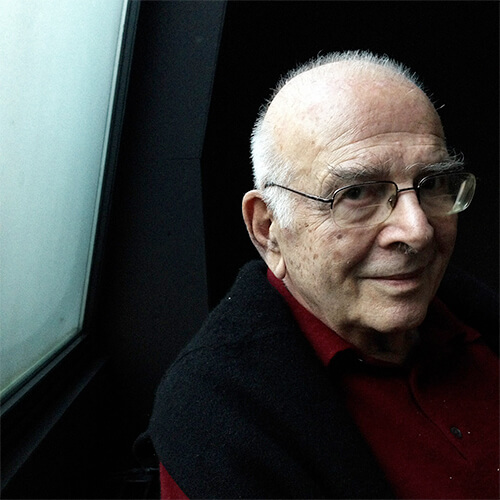Frank Horvat is an internationally renowned fashion photographer, who has recently celebrated fifty years experience in the field. Throughout these years he has not only embraced fashion photography, but also been unafraid to experiment and adapt to new technologies, transcending the confines of photographic borders. His photography is diverse and considerably more complex than a cursory glance could reveal. He is perhaps best known for his spontaneity, trust and empathy, qualities that express themselves in his sophisticated photographs.
Frank Horvat was born in Italy in 1928. He first started photographing at age fifteen with a 35 mm Retinamat camera, and moved to Milan to study art in 1947. By 1950 he was doing freelance work for Italian fashion magazines; Epoca published his first photographic essay in 1951. Horvat was one of the first artists to apply the 35mm film camera and reportage techniques to fashion art photography. He created a new and more realistic style that revolutionized the development of fashion-based photography in England, France, and the United States. He stylistically combined realism and artifice, movement, and inventive locations, which won him immediate success as a French fashion photographer. His photographs have appeared in leading European and American magazines including Life, Elle, Vogue, Harper’s Bazaar, Glamour and Jardin des Modes from 1951-61.
Horvat initially worked for the American picture agency, Magnum, but since he “posed” his subjects he left for Realities and Black Star. He moved to Paris three years later and currently divides his time between the city and the south of France. Horvat’s work with French fashion photography has been exhibited around the world and can be found in the permanent collections of numerous prestigious museums including Bibliothèque Nationale, Musée National d’Art Moderne, Kunst-bibliothek, Museum of Modern Art, and the George Eastman House, and numerous other collections.
Source: Holden Luntz Gallery
